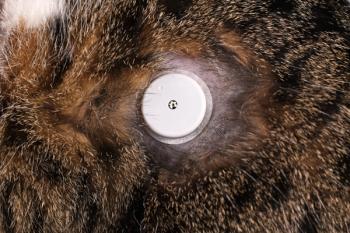
Wellness Tip of the Week: Finding the neutral spine
Aaron Shaw, OTR/L, CHT, CSCS, shares an exercise for aligning the spine in its natural position
Healthspan coach Aaron Shaw, OTR/L, CHT, CSCS, offers a quick exercise for protecting the spine and reducing the risk of back injuries in the veterinary profession, which may often involve a hunched posture. The technique, Shaw explains, involves finding the neutral spine—the natural, healthy alignment of the spine in which its 3 curves are properly balanced.
Below is the video transcript, which has been lightly edited for improved clarity:
Aaron Shaw, OTR/L, CHT, CSCS: Welcome to Tip of the Week with Coach Aaron Shaw. Today I want to talk about protecting your spine, decreasing your risk of back injuries.
Back injuries are a huge problem in the vet industry, in no small part because people tend to be hunched over, kind of rounded forward. It's understandable. We're taking care of our clients. We're on our phone some of the time. We're on our computer some of the time, so the tendency is to be in this forward posture. To decrease the pressure on our spine, we need to find our neutral spine.
You can do this by starting off by standing up nice and tall. Get a dowel of some type. It can be a broomstick. Very simple. What you're going to do is you're going to place this dowel along your spine where you're standing up nice and tall, and I want you to feel 3 points of contact: your sacrum, your thoracic spine, and then the back of your head. And so, this is what a neutral spine feels like. Feels like you're standing at full attention.
But from here, what I want you to practice is keeping those 3 points of contact very lightly and doing a bow and coming back up. This is giving you a tactile cue of what a neutral spine is. And from here, you can do a hip hinge. You can practice squatting down. You can practice coming down onto one knee, 2 knees, bending forward, as if you're taking care of your clients. You're down on the floor.
What we're preventing is that tendency to round our spine and then handle something which is going to increase the pressure on our spine and increase the risk of injury. But with doing this, with keeping these 3 points of contact, the homework is really to practice moving around, sitting, standing, bending, twisting, and making sure you're keeping those 3 points of contact, because that is your neutral spine. Practice that, it does take practice. But over time, your brain is going to start to understand that is what's safest. That is what neutral is, and it will carry over in a day-to-day life. So give that a practice.
Newsletter
From exam room tips to practice management insights, get trusted veterinary news delivered straight to your inbox—subscribe to dvm360.






